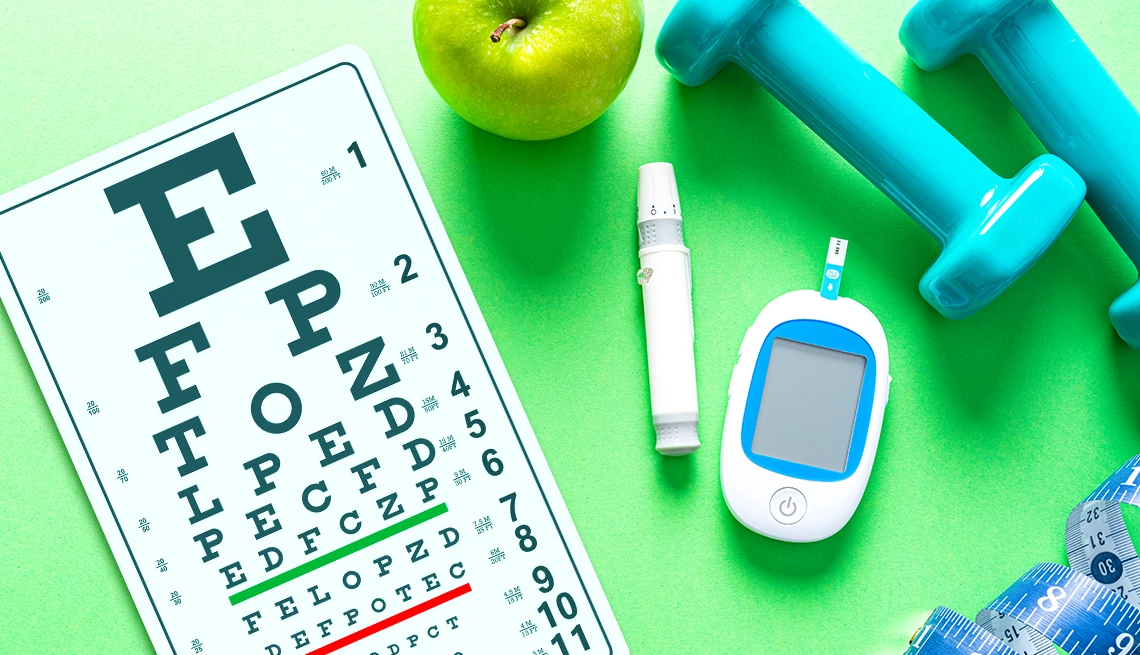AARP Hearing Center


Not paying attention to your blood sugar can lead to a lot more than some high digits on your bathroom scale. There’s a laundry list of health complications that come from lofty glucose levels — among them, nerve damage in your hands and feet, kidney damage, heart disease and stroke. And then there are your eyes.
What is diabetic retinopathy?
People who have diabetes — Type 1 or Type 2 — are at risk for diabetic retinopathy, a condition where consistently high blood-sugar levels damage the blood vessels in the retina, the thin layer of tissue at the back of the eye that’s essential for maintaining vision.
In fact, diabetic retinopathy is the leading common cause of vision loss among people with diabetes and the most frequent cause of new cases of blindness among adults aged 20 to 74, a 2023 study found.
What causes diabetic retinopathy?
The onset of diabetic retinopathy largely depends on the type of diabetes a person has and how long they’ve had it.
For example, people with type 1 diabetes are often diagnosed with diabetes at a younger age because their symptoms tend to be more severe. While they’re typically diagnosed early, it can still take years for diabetic retinopathy to develop.
In contrast, type 2 diabetes — more common among older adults — can go undetected for years. Many people may not realize they have diabetes, especially if they haven’t seen a doctor in a while and feel fine. By the time they’re diagnosed, diabetic retinopathy may have already progressed to a more advanced stage.
“If you get a new diagnosis of diabetes, especially type 2, it’s important to go to your eye doctor and get it checked,” says Lisa Olmos de Koo, professor of ophthalmology at the University of Washington School of Medicine.
Stages and symptoms of diabetic retinopathy
In the early stages of diabetic retinopathy, you might not even know you have it. But as it worsens, your vision takes a hit. It may fluctuate between clear and blurry. You may get floaters (spots or dark strings in your vision), poor night vision, dark or empty areas in your vision, or colors that appear faded. Left unchecked, it can lead to permanent vision loss.
The disease is categorized in two phases:
Nonproliferative diabetic retinopathy (NPDR)
NPDR is the earliest stage and most common form of diabetic retinopathy. In this stage, tiny blood vessels in the retina are damaged, leading to a variety of issues. Blood spots, known as dot blot hemorrhages, and dilated blood vessels, called microaneurysms, are common signs. Additionally, cotton wool spots — areas with reduced blood flow—can develop, along with fatty deposits known as exudates.


































































More From AARP
Common Eye Conditions in Older Adults
These common symptoms may be signs of an eye disease
Could You Have Photophobia, a Light Sensitivity Condition?
A look at the symptoms, causes, and treatments for discomfort caused by brightness
Know the Signs of Thyroid Eye Disease
Here are red flags for this sneaky disorder, also known as Graves’ eye disease